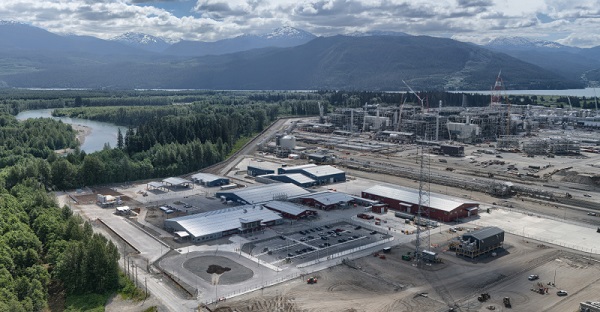Energy
Canada creates a brand new fossil fuel subsidy – Awkward: Etam

From the Frontier Centre for Public Policy
By Terry Etam
Upon hearing about the federal government’s decision to roll back the carbon tax on heating oil, I rolled up my sleeves. The point of writing about energy at all is to try to illuminate some aspect of an energy topic from a viewpoint inside the energy sector; to explain some energy nuance that the general population, which cares little for the nuances of energy, may find valuable. Energy is not simple, and there are a lot of loud storytellers out there, selling magical beans and wishful thinking.
To me, the carbon tax rollback was an annoyingly flagrant bit of vote-buying, yet another irritant from the federal government but one that, on centre-stage, seemed to have far less potential for cross-country histrionics than, for example, the time the prime minister threw his talented and principled First Nations minister under the bus. Now that was a shockwave.
This carbon tax vote grab? Ha. SNC Lavalin, Jody Wilson-Raybould, the WE Charity scandal, foreign interference… a heating oil subsidy doesn’t even crack an annual top-ten list of federal governance dirty diapers.
Or so I thought. Hoo boy. The Hail Mary scheme has blown up, blown up real good. Critics are everywhere, from across the political and environmental spectrum. Liberal heavyweights are attacking Trudeau; economists that love the carbon tax for its ‘efficiency’ are declaring the carbon tax dead. Incredulously, premiers have voiced a unanimous opinion that the entire country needs to be treated consistently.
Upon further thought, it shouldn’t be a big surprise that even the hard core climate crowd is displeased. The federal government has been lavish with announcements and proclamations about eliminating fossil fuel subsidies, that they would do so faster than imaginable, that, well, read their words for yourself: “Canada is the only G20 country to phase out inefficient fossil fuel subsidies ahead of the 2025 deadline. We are the first country to release a rigorous analytical guide that both fulfills our commitment and transparently supports action.”
“What the hell is this?” appears to be the consensus among a disparate group of voices that reaches consensus on nothing.
Be very clear why there is outrage: this is a shallow, obvious vote grab that crumbles the pillars of this government, and it most definitely is a creation of a brand new fossil fuel subsidy – so much for international credibility after all the hectoring this government has done globally. (If you have any doubts that this is anything but a political maneuver, consider that almost exactly a year before, in October 2022, the Conservatives tried to pass a motion to exempt home heating oil from the carbon tax, and all Liberal MPs save one brave Newfoundlander voted against it.)
Since the whole topic of the carbon tax has now come up though, here is a critical point that warrants some thought.
Canada and the US have chosen two different strategies to reduce emissions. Canada has, of course, the carbon tax – if you use or burn hydrocarbons, you’re going to pay (certain rural maritimers temporarily notwithstanding). Governmental, and government friendly, economists contort themselves into pretzels to demonstrate that the rebates handed back by the federal government “more than compensate” for the carbon tax, but every citizen that goes to a grocery store and realizes that every item in the industrial chain that handled any of those products in this country paid their own carbon tax, and that all that is rolled into the end product, has a very strong real-world suspicion that the government’s equation is laughable.
Beyond that, there is a big problem with Canada’s ‘stick’ approach to carbon reduction. Canadians can choose to limit the impact of the carbon tax by switching to something less carbon intensive, or spending to otherwise limit emissions. You don’t want to pay the carbon tax, you or your business? “No problem!” Says the federal government; just spend some exorbitant amount of capital, based on frameworks and guidelines that are not yet even ready.
In the US, the government long ago (2008) introduced something called 45Q, a carbon credit which was recently beefed up significantly under the Biden Inflation Reduction Act energy policy. 45Q is a carrot. If you are a carbon emitter, well, no one likes the emissions, but go ahead and carry on with your business.
If you choose to reduce your carbon emissions however, the government will hand you a cheque (sorry, check) for doing so – $85 per tonne CO2e, to be precise. You can start a new business that generates emissions credits, and if you can do it for less than $85/tonne, you have a new profit centre. There is a companion credit called 45X; credit revenue can be generated from it by manufacturing components that go into various energy technologies including structural fasteners, steel tubing, critical minerals, pretty much any battery component, etc.
In short, an existing business can carry on as before, or embark on a new venture with a guaranteed revenue stream from carbon credits generated.
In Canada, the stick is, like, really big, and for real. If you exist and consume conventional energy, you will pay, and pay dearly, and the amount will go up every year until either 2030 or until you cry uncle, whichever comes first.
Want to avoid paying the tax? Again, you will pay dearly, but differently; you will pay for capital expenditures on whatever means are available to you, using whatever policies are worked out by governments at all levels (Not a secret: a great many of the regulatory bugs are not yet worked as to potential solutions to limit emissions, capture/store carbon, etc.).
In Canada, either way, you pay through the nose. In the US, you have options to go into another line of business, or to find potentially unrelated ways to reduce emissions, with a ‘guaranteed revenue stream’ in the form of credits.
Guess in which direction businesses will thunder?
Economists love Canada’s carbon tax because it is ‘efficient’. Well, yes, that is true in an oddball sort of way, just as I can guarantee you that I can ‘efficiently’ reduce local vehicular traffic by blowing up every bridge and overpass. How’s that for efficient? I could cut traffic levels by greater than 50 percent within hours of delivery of the ACME Dynamite.
At the end of the day, the federal government’s backpedaling on the carbon tax is symptomatic of a cornerstone of the entire movement failing, because it was made of styrofoam and the building upon which it was constructed will only work with carefully engineered cement.
Europe is no different, celebrating emissions reduction successes while not wanting to talk much about how the industrial sector has been hollowed out. “Stick” taxes force companies to shut down and/or leave, and just plain punish citizens for things like heating their homes.
The carbon tax is a solution to the extent that there is readily-trimmable fat in the system. But it has to be designed to go after that fat, not after everything that moves. Autos are a perfect example. The federal government could have mandated a switch to hybrids, and banned sales of 500-hp SUVs and whatever (don’t yell at me free marketers; I’m pointing out real-world pathways that are possible). They could have mandated a rise in corporate average fuel economy in one way or another.
That is trimmable fat. Attacking home heating fuels is not.
This isn’t to say the US’ program is sheer genius. However, it is worth noting that 45Q has been around for fifteen years; what has happened recently is that it has been beefed up in a way that makes sense. (The US is also doing nonsensical things like forcing companies into carbon capture and sequestration, at the same time that, as US Senator Joe Manchin points out, “CCUS and DAC developers have submitted more than 120 applications to EPA [Environmental Protection Agency] for Class VI well permits to sequester carbon since the IRA passed, and there are 169 total pending applications, and not one approval has been made by the Biden Administration.”)
The energy transition as envisioned by the ‘climate emergency’ crowd was doomed to fail because it was based on a ‘too fast, too soon’ transition game plan – which was actually not a plan at all, more of a command – and, equally as relevant, was based on the tenuous fear instilled in citizens by bad weather (an entire generation is now being raised to 1) be terrified of the weather, and 2) be convinced that their actions can influence it. Stop it.).
Our entire world is built on oil, natural gas, coal (in some parts of the world) and hydrocarbon energy systems in general. Sue ‘Big Oil’ all you want; that won’t change anytime soon.
Energy illiteracy is the slow-moving black plague of our time.
Canada’s efficient carbon tax pits citizens against their heating needs, against their business interests, and against inescapable realities.
Here’s the sad part: All the federal government is doing here is facing reality, or starting to. Europe did the same last year, spending hundreds of billions in brand new fossil fuel subsidies to shield consumers from rocketing energy prices. When push comes to shove, governments will wilt under pressured voter pocketbooks.
Boneheads will at this point insert the oft-heard refrain “So you’re saying we should just do nothing.” I’ve heard that so often it sounds like mosquitoes in summer. It’s the only attack some people have.
It is actually an amazing time to see new energy technologies take shape, with the best minds in the entire energy industry pushing in that way. We are seeing the creation of hydrogen hubs, development of new technology like fuel cells, greater use of methane capture from landfills, etc. A great many great minds are making significant progress.
But even those geniuses can’t change the laws of reality. Eight billion people are now alive at the same time due to a certain system, and it will take a very long time to change that system if all of those people stay alive and try to live like the west does.
Energy wise, we need better, much better. Canada’s government is paying the price for heedlessly listening to ideological cheerleaders. Just like Canada’s citizens have been.
Terry Etam is a columnist with the BOE Report, a leading energy industry newsletter based in Calgary. He is the author of The End of Fossil Fuel Insanity. You can watch his Policy on the Frontier session from May 5, 2022 here.
Alberta
Temporary Alberta grid limit unlikely to dampen data centre investment, analyst says
From the Canadian Energy Centre
By Cody Ciona
‘Alberta has never seen this level and volume of load connection requests’
Billions of investment in new data centres is still expected in Alberta despite the province’s electric system operator placing a temporary limit on new large-load grid connections, said Carson Kearl, lead data centre analyst for Enverus Intelligence Research.
Kearl cited NVIDIA CEO Jensen Huang’s estimate from earlier this year that building a one-gigawatt data centre costs between US$60 billion and US$80 billion.
That implies the Alberta Electric System Operator (AESO)’s 1.2 gigawatt temporary limit would still allow for up to C$130 billion of investment.
“It’s got the potential to be extremely impactful to the Alberta power sector and economy,” Kearl said.
Importantly, data centre operators can potentially get around the temporary limit by ‘bringing their own power’ rather than drawing electricity from the existing grid.
In Alberta’s deregulated electricity market – the only one in Canada – large energy consumers like data centres can build the power supply they need by entering project agreements directly with electricity producers.
According to the AESO, there are 30 proposed data centre projects across the province.
The total requested power load for these projects is more than 16 gigawatts, roughly four gigawatts more than Alberta’s demand record in January 2024 during a severe cold snap.
For comparison, Edmonton’s load is around 1.4 gigawatts, the AESO said.
“Alberta has never seen this level and volume of load connection requests,” CEO Aaron Engen said in a statement.
“Because connecting all large loads seeking access would impair grid reliability, we established a limit that preserves system integrity while enabling timely data centre development in Alberta.”
As data centre projects come to the province, so do jobs and other economic benefits.
“You have all of the construction staff associated; electricians, engineers, plumbers, and HVAC people for all the cooling tech that are continuously working on a multi-year time horizon. In the construction phase there’s a lot of spend, and that is just generally good for the ecosystem,” said Kearl.
Investment in local power infrastructure also has long-term job implications for maintenance and upgrades, he said.
“Alberta is a really exciting place when it comes to building data centers,” said Beacon AI CEO Josh Schertzer on a recent ARC Energy Ideas podcast.
“It has really great access to natural gas, it does have some excess grid capacity that can be used in the short term, it’s got a great workforce, and it’s very business-friendly.”
The unaltered reproduction of this content is free of charge with attribution to the Canadian Energy Centre.
Energy
LNG Export Marks Beginning Of Canadian Energy Independence

From the Frontier Centre for Public Policy
Kitimat’s LNG launch ends years of delay, weak policy and lost opportunity. This is a strategic turning point for Canada
Last week marked a turning point for Canadian sovereignty. On July 1, 2025, the tanker Gaslog Glasgow departed Kitimat, B.C., carrying Canada’s first-ever commercial liquefied natural gas (LNG) export to Asia. More than a shipment, it signalled the end of our economic vassalage to the United States and a long-overdue leap into global energy markets.
LNG Canada CEO Chris Cooper called it a “truly historic moment.” He’s right. The cargo left just days after the Kitimat plant produced its first liquefied natural gas and entered operation. The $40-billion megaproject, the largest private-sector investment in Canadian history, is now a fully functional Pacific Coast export hub. It can ship up to 14 million tonnes annually, and expansion is already being discussed.
Yet this success didn’t come easily. Despite being one of the world’s largest natural gas producers, Canada lacked an LNG export terminal, largely due to political delays, regulatory hurdles and lack of federal support. That this happened at all is remarkable, given nearly a decade of federal sabotage. Prime Minister Justin Trudeau’s ideological hostility to natural gas meant rebuffed allies, stalled projects and choked-off investment.
Foreign leaders (from Japan and Germany to Greece) practically begged Ottawa to green-light Canadian LNG. Trudeau dismissed them, claiming there was “no business case.” No one in his caucus dared contradict him. The result: lost time, lost markets and a near-complete surrender of our energy advantage.
But the business case was always there. Kitimat proves it.
The U.S. has been exporting LNG since 2016, giving them a nearly decade-long head start. But Canada has something our neighbours don’t: the Montney Formation. Spanning northeast B.C. and parts of Alberta, it covers about 130,000 square kilometres and holds enormous gas reserves. Montney gas, abundant and close to tidewater, trades at roughly half the Henry Hub price, giving Canada a significant cost edge.
Location seals the deal. Kitimat, perched on the Pacific, bypasses the congested Panama Canal, a major chokepoint for U.S. Gulf Coast exports, and offers a shorter, more direct route to energy-hungry Asian markets. This geographic advantage makes Canadian LNG not only viable but globally competitive.
In 2024, Canada exported about 8.6 billion cubic feet of gas daily to the U.S. via pipeline. With Kitimat, we finally begin breaking that one-market dependency. We also start clawing back the price differential losses that come with being captive sellers. This is how you build productivity, strengthen the dollar and reclaim economic independence from Washington.
The economic ripple effect is massive. The Kitimat build created 50,000 jobs at its peak, generated $5.8 billion in Indigenous and local contracts and left behind more than 300 permanent positions. Provincial revenues are projected in the tens of billions. In an era of anaemic growth, this is real stimulus and has staying power.
Predictably, critics raise environmental concerns. But this critique ignores global realities. Exporting Canadian natural gas to countries still burning coal is not a step backward—it’s a practical advance. Natural gas is up to 25 per cent cleaner than coal when comparing full lifecycle emissions (that is, from extraction to combustion). Global emissions don’t respect borders. If Canada can displace dirtier fuels abroad, we’re part of the solution, not the problem.
And this is only the beginning. Cedar LNG and Woodfibre LNG are already under construction. Atlantic Coast projects are in the queue. We must now defend this momentum against bureaucratic delays, activist litigation and ideological roadblocks.
LNG is not a climate villain. It’s a bridge fuel that cuts emissions, creates wealth and helps fund our national future.
Marco Navarro-Genie is vice-president of research at the Frontier Centre for Public Policy and co-author, with Barry Cooper, of Canada’s COVID: The Story of a Pandemic Moral Panic (2023).
-

 Business1 day ago
Business1 day agoCarney government should apply lessons from 1990s in spending review
-

 Business1 day ago
Business1 day agoTrump to impose 30% tariff on EU, Mexico
-

 illegal immigration2 days ago
illegal immigration2 days agoICE raids California pot farm, uncovers illegal aliens and child labor
-

 Entertainment1 day ago
Entertainment1 day agoStudy finds 99% of late-night TV guests in 2025 have been liberal
-

 Energy1 day ago
Energy1 day agoLNG Export Marks Beginning Of Canadian Energy Independence
-

 Frontier Centre for Public Policy14 hours ago
Frontier Centre for Public Policy14 hours agoCanada’s New Border Bill Spies On You, Not The Bad Guys
-

 Uncategorized14 hours ago
Uncategorized14 hours agoCNN’s Shock Climate Polling Data Reinforces Trump’s Energy Agenda
-

 Opinion6 hours ago
Opinion6 hours agoPreston Manning: Three Wise Men from the East, Again



